
Featured research
E&H | Impact of Airborne Particulate Matter Exposure on Very Early Pregnancy Outcomes Among Women Undergoing IVF-ET in China
Highlight Summary:
Prof. Bin Wang’s team at Peking University, conducted a multicenter retrospective study using clinical data from eight large assisted reproduction centers across seven provinces in China (Beijing, Anhui, Guangxi, Gansu, Henan, Tianjin, and Shandong). They found a negative association between PM2.5 exposure within the week before and after embryo transfer and the success rate of very early pregnancy, with the sixth day before embryo transfer identified as the most sensitive exposure day. The study highlights the regional and population susceptibility to the reproductive health effects of PM2.5 exposure, particularly for women undergoing fresh embryo transfer, who are more vulnerable compared to those undergoing frozen embryo transfer.
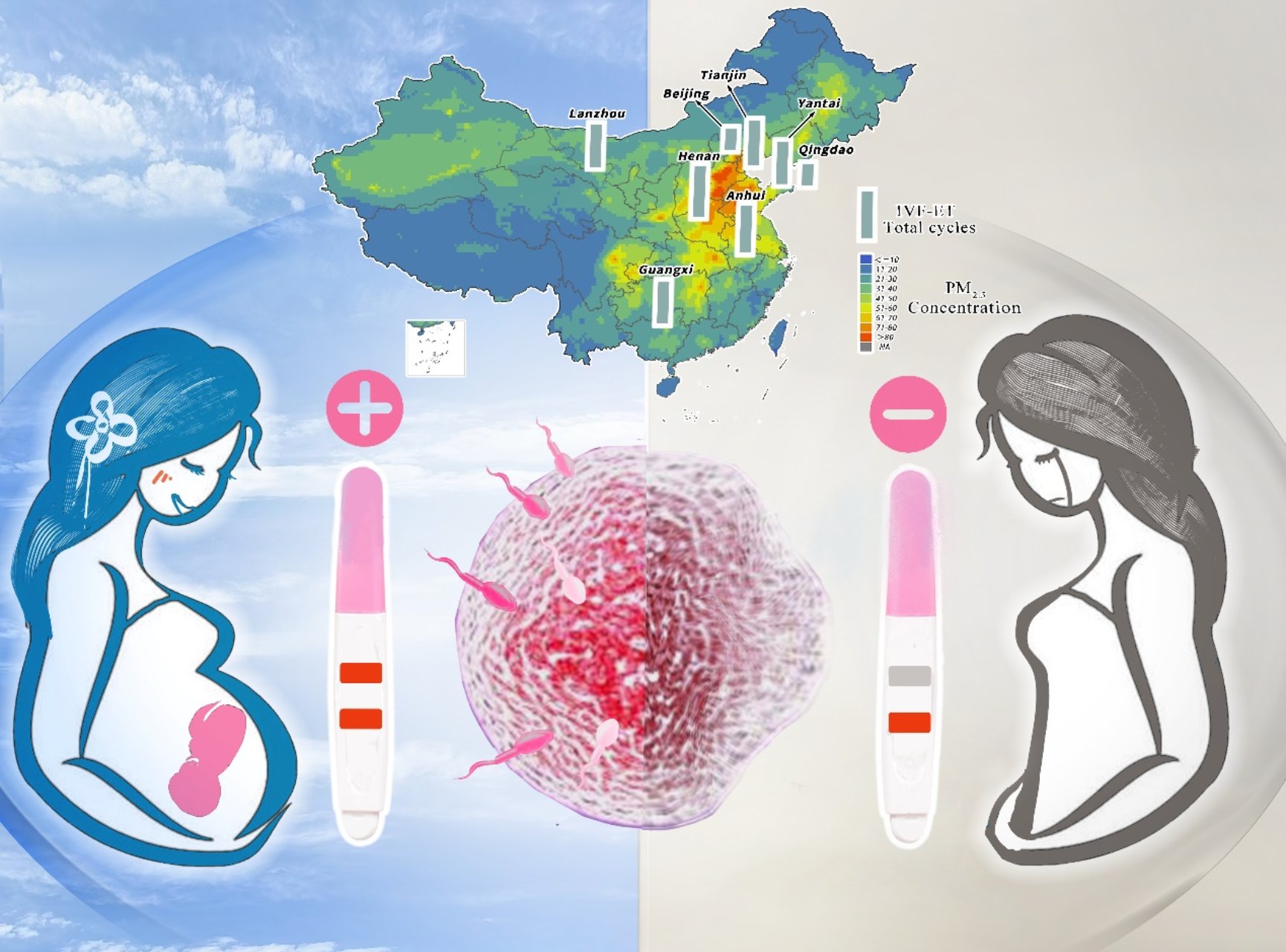
Figure 1. Graphical abstract
Type of Article: Article
Primary Institution: Peking University
First Author: Changxin Lan
Journal: Environment & Health
Citation: Lan C#, Guan Y#, Luo H#, Ma X#, Yang Y#, Bao H#, Hao C#, He X#, Zhang H#, Gao N, Lin W, Ren M, Wu T, Wang C, Ni X, Shen C, Zhang J, Ma J, Zhang R, Bi Y, Zhuang L, Miao R, Song Z, An T, Liu Z, Pan B, Fang M, Liu J, Bai Z, Meng F, Chen Y, Lu X, Guo Y, Cao Y*, Lu Q*, Wang B*. "Observed Effects on Very Early Pregnancy Linked to Ambient PM2.5 Exposure in China among Women Undergoing In Vitro Fertilization-Embryo Transfer." Environment & Health, 2024, In Press. DOI: 10.1021/envhealth.4c00107. (Cover Paper)
Full Text Link: https://pubs.acs.org/doi/10.1021/envhealth.4c00107
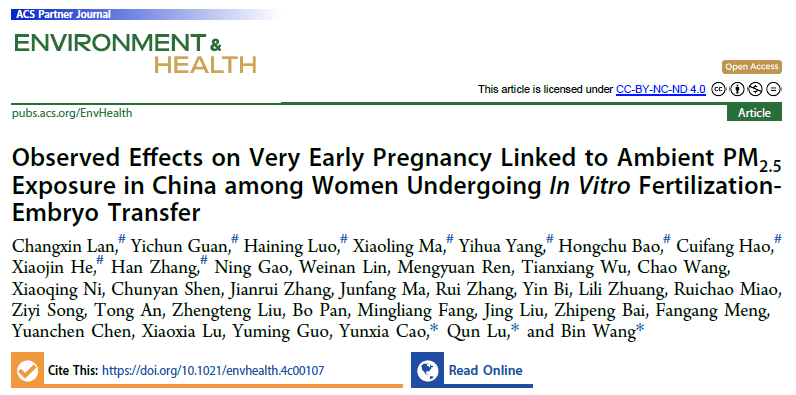
Background
Over the past half-century, various factors have led to a sharp global decline in birth rates. According to WHO, one in six individuals worldwide suffers from infertility. Environmental pollution, particularly air pollution, has become a significant social issue affecting fertility. In China, 12–18% of reproductive-age couples are estimated to experience infertility, with an increasing trend in recent years. Epidemiological studies suggest a link between PM2.5 exposure and decreased fertility. However, assessing PM2.5’s impact on outcomes in the very early stages of pregnancy (from embryo implantation to gestational sac formation) has been challenging due to difficulties in clinical monitoring during this period. Since the birth of the first test-tube baby in 1978, assisted reproductive technology (ART) has developed rapidly worldwide, with in vitro fertilization and embryo transfer (IVF-ET) being critical techniques. The detailed clinical records of women undergoing IVF-ET make this population suitable for studying the effects of PM2.5 exposure on early pregnancy outcomes.
Figures & Analysis

Figure 1. Associations between PM2.5 exposure at different time windows and biochemical/clinical pregnancy success rates.
Figure 1 illustrates the association between every 10 μg/m³ increase in PM2.5 exposure and the success rates of biochemical and clinical pregnancies. (A) The time points and exposure windows for PM2.5 in patients, with a total time window of 13 days. The average PM2.5 concentrations from six days before embryo transfer to the day of transfer, as well as from the day of transfer to six days after, are labeled as P6B, P5B, …, P1B, and P1A, P2A, …, P6A. The period from D6B to D6A is denoted as P13. The two pregnancy outcomes include (B-C) biochemical pregnancy and (D-E) clinical pregnancy. The results show that cumulative PM2.5 exposure during the week before and after embryo transfer is negatively associated with the success rate of biochemical pregnancy, with a hazard ratio (95% confidence interval) of 0.999 (0.997–0.999). The most sensitive exposure day is six days before embryo transfer, while no significant association was found between PM2.5 exposure and clinical pregnancy success rates.
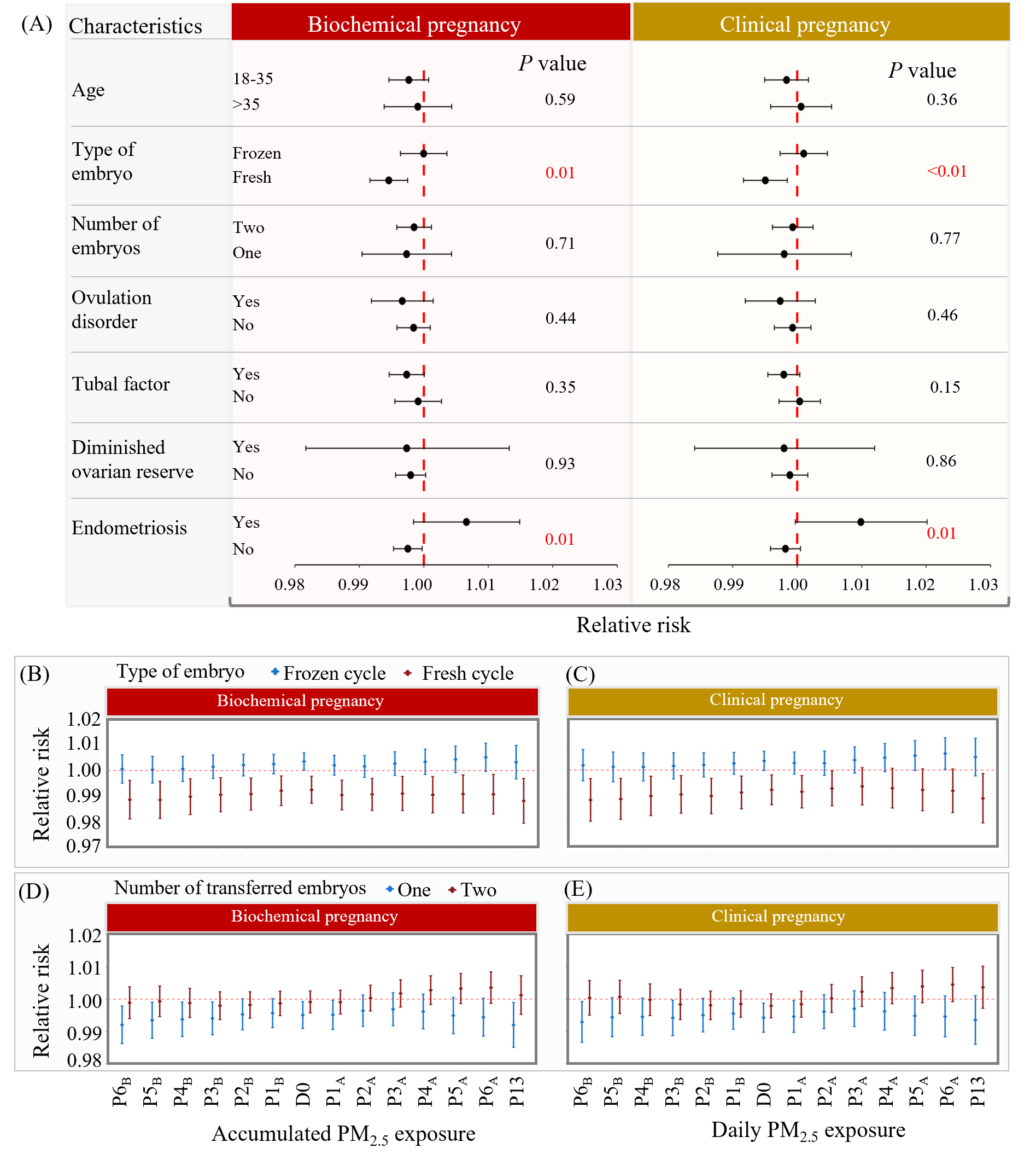
Figure 2. Stratified analysis of the association between PM2.5 exposure and pregnancy outcomes by age, embryo transfer type, number of embryos transferred, and infertility cause.
Figure 2 presents the stratified analysis results of the association between PM2.5 exposure and biochemical and clinical pregnancies. (A) Stratification by age, embryo transfer type, number of embryos transferred, and infertility causes (ovulation disorders, tubal factors, diminished ovarian reserve, and endometriosis) shows that women undergoing fresh embryo transfer and those with endometriosis are more sensitive to PM2.5 exposure compared to women undergoing frozen embryo transfer and those without endometriosis. (B-C) Stratification by embryo type in the Tianjin region. (D-E) Stratification by the number of embryos transferred in the Henan region. The results indicate that among women undergoing fresh embryo transfer and those with a single embryo transfer, PM2.5 exposure during almost all time windows is significantly negatively associated with biochemical and clinical pregnancy rates.
Conclusion & Future Directions
This multicenter study demonstrates that PM2.5 exposure may reduce early pregnancy success rates in IVF-ET. The week before and after embryo transfer appears to be a critical exposure window. Although the overall effect of PM2.5 is relatively mild, its impact remains significant given the growing number of infertile individuals and the large population of women exposed to PM2.5 pollution. Women undergoing fresh embryo transfer or single embryo transfer are particularly vulnerable to PM2.5 exposure, suggesting the need for targeted protective measures for these groups.
Author Team Introduction (First Authors)

Changxin Lan, Institute of Reproductive and Child Health, School of Public Health, Peking University
Graduated with both bachelor's and master's degrees from Peking University, currently pursuing a PhD at the Institute of Reproductive Health, School of Public Health, Peking University, specializing in epidemiology and health statistics. Research focuses on the impact of air pollution and climate change on reproductive health. To date, has contributed to 12 published SCI papers, with two as the first author in Chemosphere and Environment & Health. Participated in four national projects and is proficient in using R and Python for big data analysis, scientific visualization, GIS operations, and constructing machine learning and deep learning models.
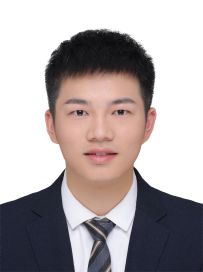
Han Zhang, Institute of Reproductive and Child Health, School of Public Health, Peking University
Graduated with a bachelor's degree from Peking University and is currently pursuing a master's degree at the same institution, specializing in epidemiology and health statistics. Research focuses on the impact of air pollution and climate change on reproductive health.

Yichun Guan, Director of the Department of Reproductive Medicine, the Third Affiliated Hospital of Zhengzhou University
Medical doctor, professor, chief physician, and doctoral advisor. Research focuses on epigenetic regulation and the safety of offspring from assisted reproductive technologies. Serves as the principal investigator for one National Natural Science Foundation of China project and one national key research project, among others. Published over 40 SCI and core Chinese journal papers in journals such as Cell Death, Human Reproduction Update, and Fertility and Sterility. Serves as an editorial board member for the Chinese edition of Human Reproduction Update. Recipient of three second prizes in the Henan Provincial Science and Technology Progress Award and one second prize in the Chinese Maternal and Child Health Science and Technology Award.
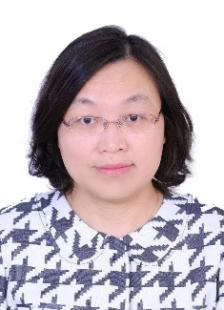
Haining Luo, Reproductive Medicine Center, Tianjin Central Hospital of Gynecology Obstetrics, Maternity Hospital of Nankai University
Chief physician specializing in the treatment of female infertility and human-assisted reproductive technology. Led or participated in more than 10 projects, including those funded by the National Natural Science Foundation of China. Published over 40 articles in Chinese and English and co-authored two books. Holds various professional roles, including committee member of the Chinese Society of Reproductive Medicine. Recipient of the Tianjin Youth May Fourth Medal and National Health System Young Post Expert honors.

Xiaoling Ma, The First Hospital of Lanzhou University, the First Clinical Medical School of Lanzhou University
Chief physician, associate professor, and master's advisor. Focuses on reproductive endocrine diseases, infertility, and the mechanisms of ovulation disorders, with additional efforts in clinical application, public education, fertility assessment, and preservation for cancer patients. Led or participated in more than 30 national and provincial research projects and published over 30 papers in SCI and authoritative journals.

Yihua Yang, Guangxi Reproductive Medical Center, the First Affiliated Hospital of Guangxi Medical University
Chief physician, doctoral advisor, and academic leader of key disciplines designated by the Guangxi Health Commission. Research focuses on reproductive endocrinology and assisted reproductive technology, with notable achievements in uterine receptivity and recurrent miscarriage. Published over 20 SCI papers as the first or corresponding author in journals such as Oncogene, Cancer Research, and Fertility and Sterility (H-index = 17). Recipient of several awards, including the Guangxi Youth Science and Technology Award and Zhang Lizhu Young Innovator Award in Reproductive Medicine.

Hongchu Bao, Reproductive Medicine Centre, Yuhuangding Hospital of Yantai, Affiliated Hospital of Qingdao University
Chief physician, medical doctor, and director of the Shandong Key Laboratory of Reproductive Health and Genetics. Specializes in IVF-ET, artificial insemination, and minimally invasive reproductive surgeries. Author of the book Minimally Invasive Techniques in Reproductive Medicine. Holds leadership roles in multiple national and provincial medical associations.

Cuifang Hao, Qingdao Women and Children’s Hospital, Affiliated Hospital of Qingdao University
Senior chief physician and doctoral advisor. Research focuses on ovulation disorders, uterine regeneration, and the development of new reproductive materials. Led six national and provincial-level projects, with a co-first author publication in NEJM. Received numerous honors, including National Outstanding Scientist Awards.

Xiaojin He, Reproductive Medicine Center, Department of Obstetrics and Gynecology, Shanghai General Hospital, Shanghai Jiao Tong University School of Medicine
Chief physician, professor, and doctoral advisor. Experienced in treating complex cases like idiopathic infertility and embryo developmental arrest. Published over 50 SCI papers in journals such as Nature Cell Biology and Nature Communications. Co-authored national expert consensus guidelines and received prestigious awards like the National Maternal and Child Health Science and Technology Award.
Corresponding Authors

Yunxia Cao, Department of Obstetrics and Gynecology, the First Affiliated Hospital of Anhui Medical University
Doctor of Medicine, chief physician, and distinguished professor. Leads numerous national and provincial projects, with over 300 SCI publications in journals like Cell and Nature Genetics. Recipient of the "2014 China's Top 10 Scientific Advances" award.

Qun Lu, Medical Center for Human Reproduction, Beijing Chao-Yang Hospital, Capital Medical University
Chief physician and professor specializing in clinical reproductive medicine, with significant contributions in oocyte activation, environmental endocrine disruptors, and fertility preservation. Authored over 60 academic papers and holds multiple patents.

Bin Wang, Deputy Director, Institute of Reproductive and Child Health, School of Public Health, Peking University Tenured associate professor and researcher with expertise in environmental health and exposome data science.
His main research interests are Environment Health, Exposome, Bioinformatics and Artificial intelligence. He has presided over 4 projects from National Natural Science Funding in China (NSFC) as the principal investigator, and participated in three national key research and development projects as backbone member. As the first or corresponding author, I have published a total of 55 papers in international authoritative journals (H-index = 40, he-cited more than 5000 times). He served as the Associate Editor of “Machine Learning and Public Health” in the TOP journal “Environmental Science & Technology”. He won the Second Prize of Science and Technology of Beijing Preventive Medicine Association and the title of "Excellent Individual in the National Science and Technology System to Fight the COVID-19 Pandemic" in China.
Contributed by | Professor Bin Wang's Team (Peking University)
Reviewed by | Bin Wang

